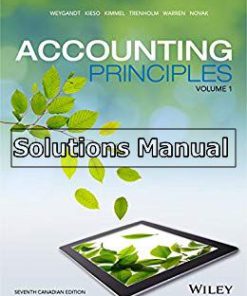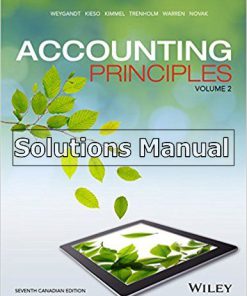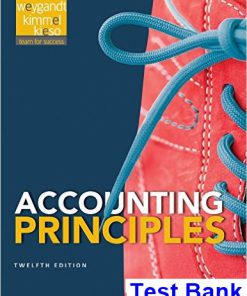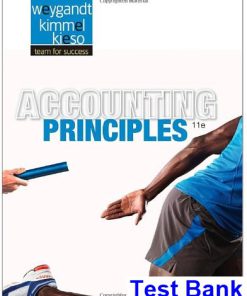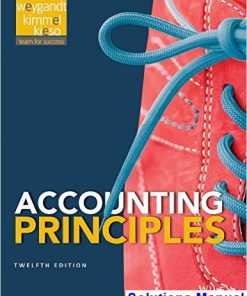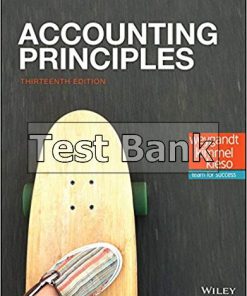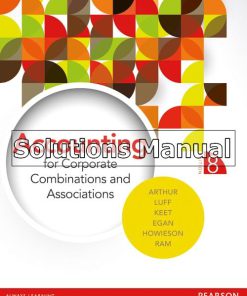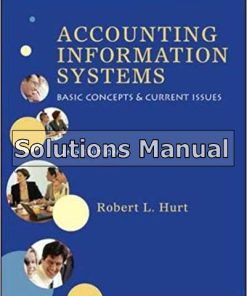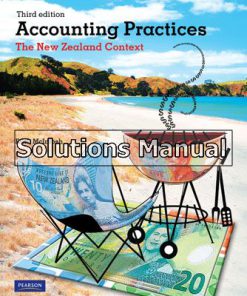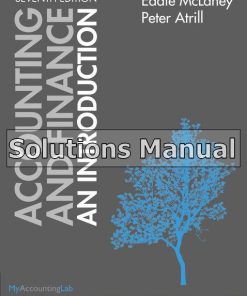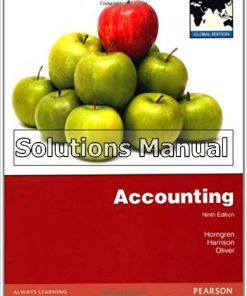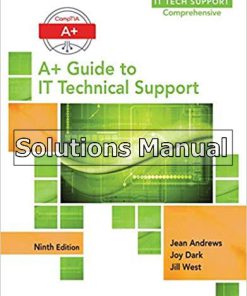Accounting Principles 11th Edition Weygandt Solutions Manual
You may also like
Instant download Accounting Principles 11th Edition Weygandt Solutions Manual pdf docx epub after payment.
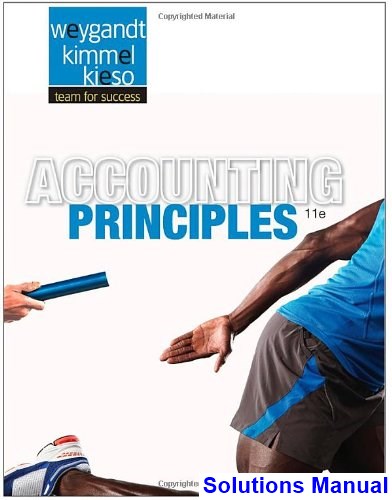
Product details:
- ISBN-10 : 111856667X
- ISBN-13 : 978-1118566671
- Author:
Accounting Principles 11th edition, by Weygandt, Kimmel, and Kieso provides a clear introduction to financial accounting that is full of real world examples that are relevant to students’ lives. The Team for Success authors understand where students struggle in this course and have developed a learning system that illustrates the accounting cycle and key transactions, while giving them the tools to apply their learning through sample exercises throughout the chapter. By expanding coverage of IFRS, this edition keeps students at the forefront of global issues that impact their future careers in business and accounting.
Table of contents:
- 1: Accounting in Action
- What Is Accounting?
- The Building Blocks of Accounting
- The Basic Accounting Equation
- Using the Accounting Equation
- Financial Statements
- 2: The Recording Process
- The Account
- Steps in the Recording Process
- The Trial Balance
- 3: Adjusting the Accounts
- Timing Issues
- The Basics of Adjusting Entries
- The Adjusted Trial Balance and Financial Statements
- 4: Completing the Accounting Cycle
- Using a Worksheet
- Closing the Books
- Summary of the Accounting Cycle
- The Classified Balance Sheet
- 5: Accounting for Merchandising Operations
- Merchandising Operations
- Recording Purchases of Merchandise
- Recording Sales of Merchandise
- Completing the Accounting Cycle
- Forms of Financial Statements
- 6: Inventories
- Classifying and Determining Inventory
- Inventory Costing
- Inventory Errors
- Statement Presentation and Analysis
- 7: Accounting Information Systems
- Basic Concepts of Accounting Information Systems
- Subsidiary Ledgers
- Special Journals
- A Look at IFRS
- 8: Fraud, Internal Control, and Cash
- Fraud and Internal Control
- Cash Controls
- Control Features: Use of a Bank
- Reporting Cash
- A Look at IFRS
- 9: Accounting for Receivables
- Types of Receivables
- Accounts Receivable
- Notes Receivable
- Statement Presentation and Analysis
- A Look at IFRS
- 10: Plant Assets, Natural Resources, and Intangible Assets
- Plant Assets
- Natural Resources
- Intangible Assets
- Statement Presentation and Analysis
- A Look at IFRS
- 11: Current Liabilities and Payroll Accounting
- Current Liabilities
- Contingent Liabilities
- Payroll Accounting
- A Look at IFRS
- 12: Accounting for Partnerships
- Partnership Form of Organization
- Basic Partnership Accounting
- Liquidation of a Partnership
- 13: Corporations: Organization and Capital Stock Transactions
- The Corporate Form of Organization
- Accounting for Issues of Common Stock
- Accounting for Treasury Stock
- Accounting for Preferred Stock
- Statement Presentation
- A Look at IFRS
- 14: Corporations: Dividends, Retained Earnings, and Income Reporting
- Dividends
- Retained Earnings
- Statement Presentation and Analysis
- A Look at IFRS
- 15: Long-Term Liabilities
- Bond Basics
- Accounting for Bond Issues
- Accounting for Bond Redemptions
- Accounting for Other Long-Term Liabilities
- Statement Presentation and Analysis
- A Look at IFRS
- 16: Investments
- Why Corporations Invest
- Accounting for Debt Investments
- Accounting for Stock Investments
- Valuing and Reporting Investments
- A Look at IFRS
- 17: Statement of Cash Flows
- The Statement of Cash Flows: Usefulness and Format
- Preparing the Statement of Cash Flows—Indirect Method
- Using Cash Flows to Evaluate a Company
- A Look at IFRS
- 18: Financial Statement Analysis
- Basics of Financial Statement Analysis
- Horizontal Analysis
- Vertical Analysis
- Ratio Analysis
- Earning Power and Irregular Items
- Quality of Earnings
- A Look at IFRS
- 19: Managerial Accounting
- Managerial Accounting Basics
- Managerial Cost Concepts
- Manufacturing Costs in Financial Statements
- Managerial Accounting Today
- 20: Job Order Costing
- Cost Accounting Systems
- Job Order Cost Flow
- Reporting Job Cost Data
- 21: Process Costing
- The Nature of Process Cost Systems
- Equivalent Units
- Production Cost Report
- Contemporary Developments
- 22: Cost-Volume-Profit
- Cost Behavior Analysis
- Cost-Volume-Profit Analysis
- 23: Budgetary Planning
- Budgeting Basics
- Preparing the Operating Budgets
- Preparing the Financial Budgets
- Budgeting in Nonmanufacturing Companies
- 24: Budgetary Control and Responsibility Accounting
- Budgetary Control
- Static Budget Reports
- Flexible Budgets
- Responsibility Accounting
- Types of Responsibility Centers
- 25: Standard Costs and Balanced Scorecard
- The Need for Standards
- Setting Standard Costs
- Analyzing and Reporting Variances from Standards
- Balanced Scorecard
- 26: Incremental Analysis and Capital Budgeting
- Incremental Analysis
- Capital Budgeting

